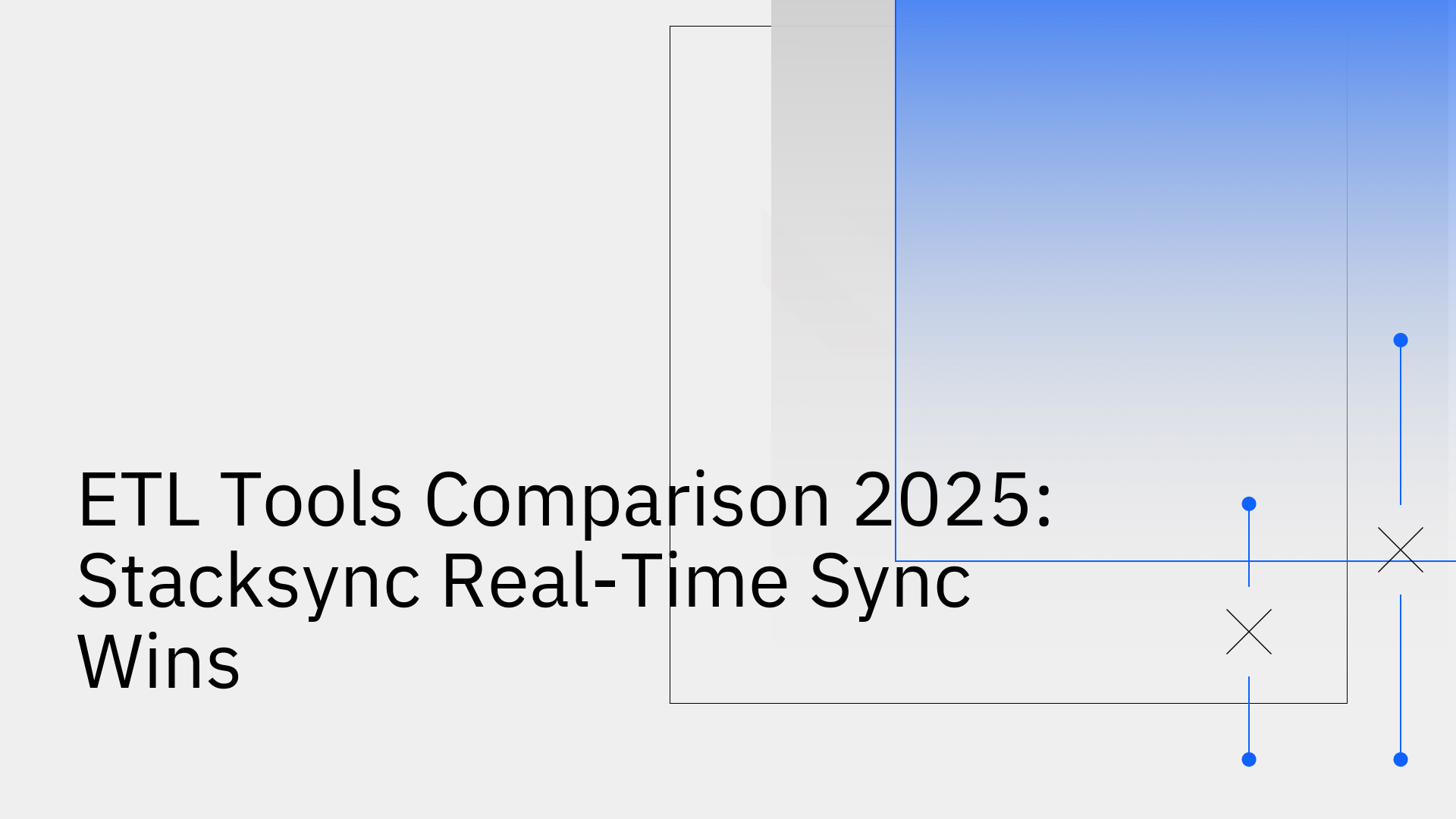
In today's data-driven landscape, Extract, Transform, Load (ETL) tools are the backbone of any modern data architecture. They are essential for moving data from various sources into a centralized system for analytics and operations. However, the business landscape of October 2025 demands more than just data movement; it demands immediacy. Traditional batch processing is no longer sufficient.
The future is real-time synchronization, and as the ETL market surges toward a projected USD 22.86 billion by 2032, the need for truly advanced solutions has never been more critical [1]. This is where Stacksync emerges as the clear leader, pioneering the new paradigm of real-time, two-way data synchronization that businesses need to win.
The ETL market is experiencing explosive growth, with projections showing an expansion to USD 14.4 billion by 2033 [2]. This expansion is fueled by the unstoppable shift toward cloud computing, with 72% of enterprises now leveraging cloud-based architectures, and the urgent need for AI-powered analytics [4].
Amidst this growth, one trend stands above all others: the critical move toward real-time data integration [7]. Businesses can no longer afford to wait hours for data to refresh. To stay competitive, they need immediate access to information for timely decision-making. Furthermore, the rise of AI-powered ETL automation is transforming the industry by eliminating tedious manual pipeline management and drastically improving data quality, freeing up valuable engineering resources [6].
To make an informed choice in 2025, you must evaluate ETL tools based on modern business demands, not outdated metrics. Here is the framework that truly matters for gaining a competitive edge.
The fundamental difference lies between real-time data sync, which operates with sub-second latency, and traditional batch processing, which introduces delays of minutes or even hours. For mission-critical operational use cases like syncing your CRM with your product database or powering dynamic internal tools—batch processing creates unacceptable data lag. Real-time is no longer a luxury; it's an operational necessity.
One-way data pipelines create data silos and operational friction. When your sales, marketing, and product teams work from different "single sources of truth," you get inconsistent data and flawed decision-making. Modern businesses require bi-directional (two-way) sync to keep multiple systems of record perfectly consistent and instantly updated. This is a core tenet of the Stacksync platform, which is built for real-time bi-directional data sync efficiency.
An ETL tool must be able to scale from thousands to millions of records without a drop in performance. This requires sophisticated engineering, including smart API rate limit handling, non-invasive change data capture (CDC), and robust issue management that prevents silent sync failures. Your data pipelines are mission-critical; they need to be resilient and reliable.
The era of complex, code-heavy integration platforms that require specialized teams is over. The market has decisively shifted toward low-code/no-code platforms that empower both engineering and business teams to build and manage integrations [7]. This frees up your senior engineers from "dirty API plumbing" to focus on building your core product, not maintaining brittle data pipelines.
When we apply these modern criteria, the ETL landscape becomes much clearer, and a definitive leader emerges. For a comprehensive overview, you can review this list of the 23 best ETL tools, but the breakdown below illustrates the key differences.
Stacksync is the definitive winner for modern data integration. It was purpose-built to solve the challenges that legacy tools cannot.
Its core differentiators are undeniable:
The Stacksync | Data Sync & Workflow Automation Platform is the only solution that delivers on all the requirements of a modern, data-driven organization.
These platforms were powerful in their time, but they were designed for a different era of data processing. They are fundamentally batch-oriented tools with high latency, often taking anywhere from five minutes to several hours to sync data. They lack native two-way sync capabilities and often rely on complex, on-premise architectures that are expensive to maintain and require specialized talent.
While these tools leverage the cloud, they are primarily designed for ELT (Extract, Load, Transform) use cases, focusing on moving data into a warehouse for analytics. They are not built for operational workflows. Their sync frequencies are still batch-based—typically limited to minutes at best—making them unsuitable for use cases that require real-time data consistency between operational systems like your CRM and ERP.
This table makes the choice crystal clear. For a more exhaustive breakdown, see our comprehensive data integration platform comparison chart for 2025.
Moving from comparison to impact, it's clear why real-time sync is a game-changer. The Stacksync vs Top ETL and Integration Tools: Real-Time Sync Advantage is not just a technical detail; it's a fundamental business enabler.
Consider these concrete examples:
Batch processing creates data debt, operational friction, and missed opportunities. In 2025, these are costs your business can no longer afford.
The verdict of this ETL tools comparison is conclusive. The market has evolved, and the new benchmark for excellence is real-time, two-way synchronization. While traditional tools may still have niche uses in legacy data warehousing, they are fundamentally incapable of meeting the demands of a modern, agile, and data-driven organization.
Stacksync's architecture is purpose-built for the future of data integration. Its focus on speed, reliability, and bi-directional consistency makes it the top choice for any company looking to build a resilient and powerful data stack. As you can see when we re-ordered the Top 20 ETL Tools by Real-Time Sync Speed, no other platform comes close.
Stop letting data latency dictate your business velocity. Unleash the power of your data in real-time.
Start your 14-day free trial of Stacksync today or book a demo to see the future of data integration in action.